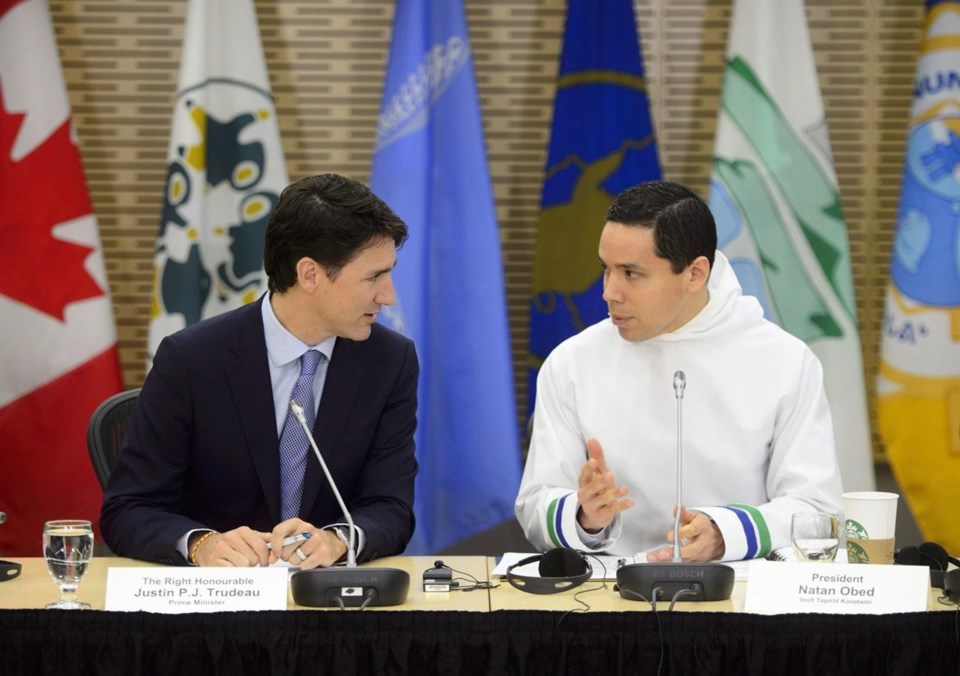Nunavut's health minister says the COVID-19 pandemic disrupted efforts to eliminate tuberculosis in Inuit communities, and questions remain over whether targets to stamp out the disease can be met.
"COVID has had a huge impact on every area of health care, and that includes TB," said John Main. "While we were putting so much effort toward dealing with COVID, we did have to slow the pace of work on other areas."
Five years ago, Ottawa and Inuit Tapiriit Kanatami, a national advocacy group, announced plans to reduce active tuberculosis across Inuit Nunangat by at least half to no more than 100 cases per 100,000 people by 2025, and eliminate it entirely by 2030. Inuit Nunangat, or Inuit homeland in Canada, is made up of more than 50 communities in Nunavut, the Northwest Territories, Quebec and Labrador.
Public Health Agency of Canada data indicates reported rates of active tuberculosis dropped significantly among Inuit between 2019 and 2020 from 188.7 cases per 100,000 to 72.2. Health officials in Inuit Nunangat, however, say that's partly due to reduced screening.
Indigenous Services Canada says the rate of tuberculosis among Inuit increased to 135.1 in 2021.
Main said Nunavut is now "getting things back on track." The territory signed a tuberculosis information sharing agreement with Nunavut Tunngavik Inc., a group representing Nunavut Inuit, in November. Main said they are also working to finalize a three-year plan to guide elimination efforts.
"It's been made clear to me the amount of hardship and stigma that can be associated with TB, as well as the elements of historical trauma around tuberculosis," he said. "That's what we're including as part of our work at every level, is this understanding of our role as health-care providers and that sometimes we need to listen and not just talk."
Main added the territory is strengthening relationships with communities affected by the disease. In Pangnirtung, where an outbreak was declared in November 2021, staffing support has been provided alongside the Canadian Red Cross, epidemiological analysis, and improved education and awareness efforts.
Main said whether the 2025 and 2030 tuberculosis elimination targets will be met is "the big question."
"At this point I can't say, but it's certainly not going to stop us from doing everything we can towards that goal," he said. "I'm not going to say that I can look into a crystal ball and see what's going to happen in the next two years, but I'm hopeful, cautiously optimistic I would say."
The Nunavik Regional Board of Health and Social Services said community screenings have resumed in the region and it is working to better target services, including recruiting local public health officers. As of January, a vaccine that protects young children against complications and severe forms of tuberculosis has been available in all communities in Nunavik.
While the risk of developing tuberculosis in Canada is very low, rates are higher among Inuit.
Between 2015 and 2019, the reported rate of active tuberculosis among Inuit living in Inuit Nunangat was approximately 300 times that of Canadian-born, non-Indigenous people, says Indigenous Services Canada.
Health-care barriers, poverty, food insecurity and overcrowded housing with poor ventilation are among the contributors to the disproportionate rates. Main said challenges in Nunavut include a lack of health-care staff and infrastructure.
The latest federal budget has earmarked $16.2 million over three years to fight tuberculosis in Inuit communities. Inuit Tapiriit Kanatami said that's roughly a quarter of what's needed for the next phase of tuberculosis elimination.
“This modest investment in Inuit health priorities does not fulfil our joint commitment with the Government of Canada to eliminate tuberculosis in Inuit Nunangat by 2030,” President Natan Obed said in a statement. “But we remain optimistic that future federal budget cycles will unlock the funding needed to honour this commitment.”
A study published in the scientific journal Infectious Disease Modelling in December 2022 evaluated tuberculosis elimination strategies in Nunavut. It suggested that under current plans, the 2025 reduction target is not achievable and eliminating tuberculosis will extend beyond 2030.
The study identified challenges including prolonged delays to case detection, limited access to diagnostic tools and services, as well as inadequate capacity for contact-tracing and rapid start of treatment.
Indigenous Services Minister Patty Hajdu said the budget's approach is "incremental but also substantial" and comes with other investments such as bilateral health transfer agreements with the provinces and territories.
She said the targets are ambitious but realistic.
"They're realistic in the sense that if everybody is determined to reach those targets then we can," she said. "It is going to require everybody to be very focused."
This report by The Canadian Press was first published April 16, 2023.
This story was produced with the financial assistance of the Meta and Canadian Press News Fellowship.
Emily Blake, The Canadian Press



